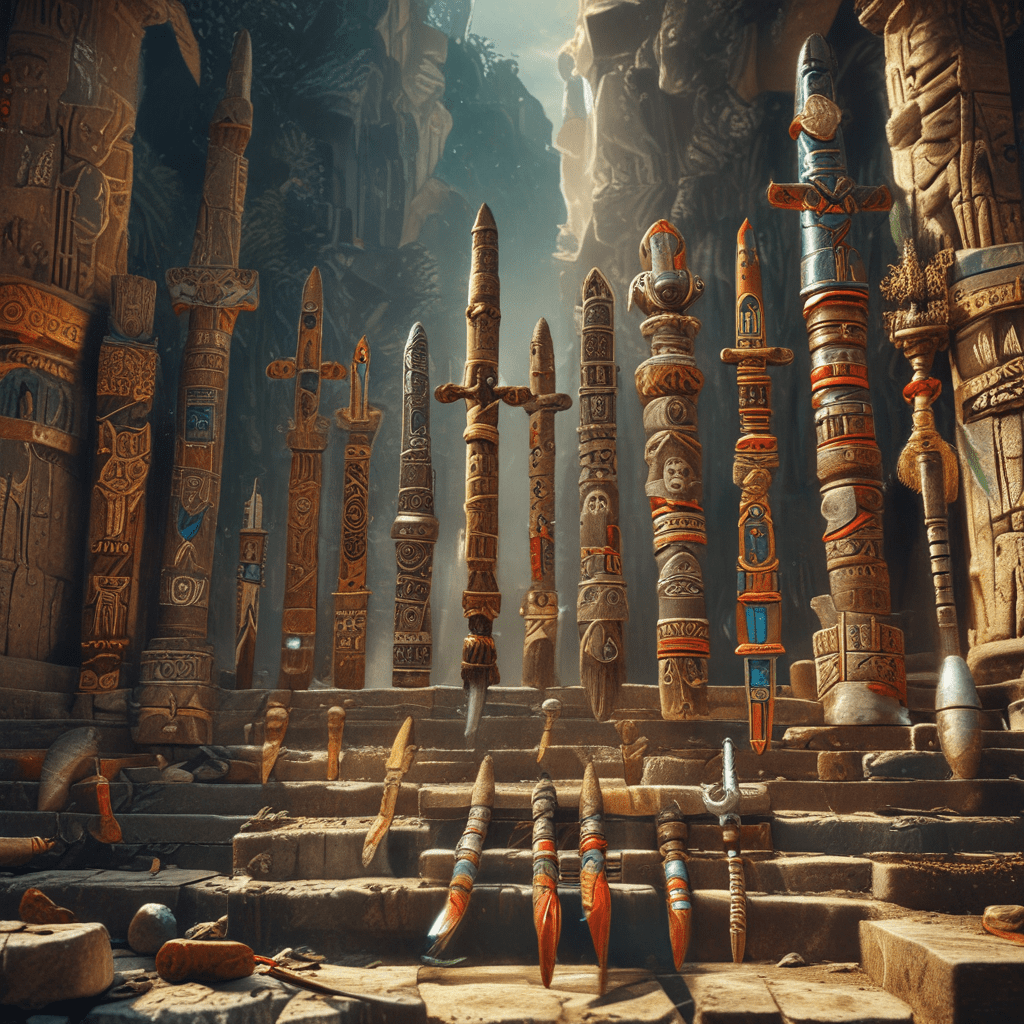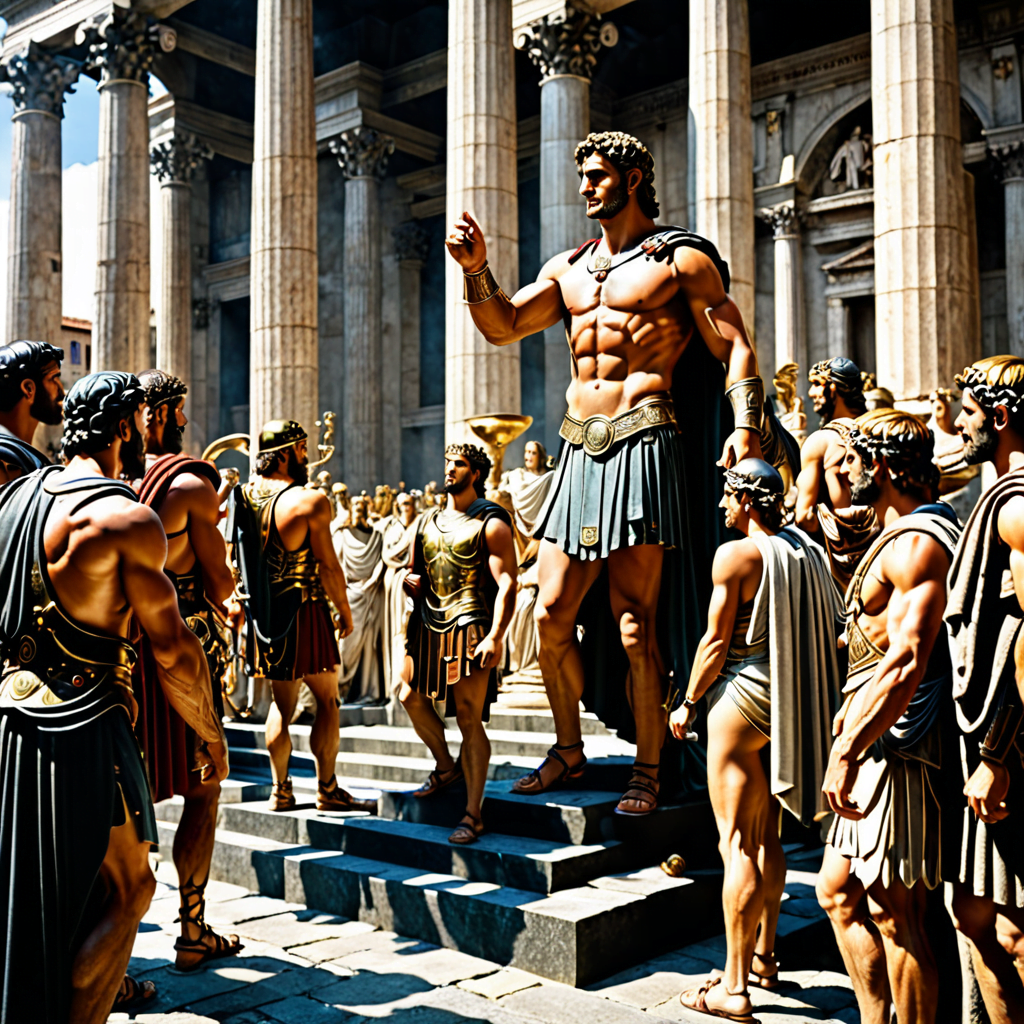Underworld Myths: The Dark Tales That Shape Our Beliefs
I. Introduction
Underworld myths are a fascinating aspect of human culture, representing the beliefs and narratives surrounding the afterlife and the realms that exist beyond our mortal understanding. These stories often depict a dark and mysterious journey that souls undertake after death, reflecting society’s deepest fears and hopes regarding mortality.
The importance of these myths in cultural narratives cannot be overstated. They shape our understanding of life, death, and what may lie beyond, influencing religious beliefs, moral values, and artistic expressions throughout history. This article will explore various underworld myths from different cultures, examining their origins, archetypes, and lasting impact on contemporary society.
II. Historical Context of Underworld Myths
Underworld myths have existed for millennia, originating in various cultures around the world. These narratives emerged as societies sought to explain the mysteries of death and the afterlife, creating rich tapestries of lore that provided comfort and understanding.
- Origins of Underworld Myths Across Different Cultures: Most ancient cultures, including the Egyptians, Greeks, and Mesopotamians, possessed their unique interpretations of the afterlife. For example, the Egyptians believed in a complex journey through the Duat, while the Greeks envisioned a realm ruled by Hades.
- The Evolution of Myths Through Time: As societies evolved, so too did their myths. Many ancient stories adapted to reflect changing beliefs, societal norms, and environments, resulting in a diverse array of underworld narratives.
- The Role of Religion and Spirituality in Shaping These Myths: Religion often served as the backbone of underworld myths, with many stories tied to specific deities and spiritual practices that guided individuals in their understanding of life after death.
III. Major Underworld Myths from Around the World
Various cultures have contributed to the rich tapestry of underworld myths. Here are some of the most notable:
A. Greek Mythology: Hades and the Realm of the Dead
In Greek mythology, the underworld is ruled by Hades, the god of the dead. The realm is divided into different sections, including Elysium for the virtuous and Tartarus for the wicked, where souls undergo judgment based on their earthly lives.
B. Egyptian Mythology: The Journey through the Duat
The ancient Egyptians believed in a perilous journey through the Duat, the realm of the dead. The soul of the deceased would face challenges and trials, ultimately judged by Osiris, the god of the afterlife, who weighed the heart against the feather of Ma’at.
C. Mesopotamian Myths: The Descent of Inanna
Inanna, the goddess of love and war, undertakes a journey to the underworld in Sumerian mythology. Her descent is filled with trials, and upon her return, she brings knowledge of the afterlife to humanity.
D. Norse Mythology: Hel and the Underworld of Niflheim
In Norse mythology, Hel is the realm of the dead, ruled by the goddess Hel. It is a cold and dark place where those who did not die a heroic death reside, contrasting with Valhalla, where warriors go after dying in battle.
E. Indigenous Beliefs: The Underworld in Native American Myths
Many Native American cultures have their unique beliefs surrounding the underworld. For instance, the Hopi people view the underworld as a place of emergence, where life begins anew, while other tribes have varied interpretations of the afterlife.
IV. Archetypes and Symbols in Underworld Myths
Underworld myths are rich with archetypes and symbols that convey deeper meanings:
- The Guide: Figures like Charon from Greek mythology and Anubis from Egyptian lore serve as psychopomps, guiding souls through the afterlife.
- The Trials of the Soul: Many myths incorporate themes of judgment and redemption, reflecting the moral consequences of one’s actions in life.
- Symbolism of Darkness and Death: The underworld often symbolizes the unknown and the fear of death, serving as a place for transformation and reflection.
V. Psychological Perspectives on Underworld Myths
From a psychological standpoint, underworld myths reveal much about the human experience:
- Carl Jung and the Collective Unconscious: Jung believed that these myths tap into the collective unconscious, revealing universal themes and archetypes that resonate with humanity.
- The Role of Fear and Mortality: Underworld myths often explore humanity’s fear of death and the unknown, offering insights into how cultures cope with mortality.
- Myths as a Reflection of Human Experience: These tales reflect human emotions, desires, and fears, providing a narrative framework for understanding life’s mysteries.
VI. Underworld Myths in Modern Culture
The influence of underworld myths extends into modern literature and film, shaping contemporary narratives:
- Influence in Literature and Film: Works such as Dante’s “Inferno” and popular films like “The Matrix” incorporate elements of underworld myths, illustrating their enduring relevance.
- Contemporary Interpretations: Modern retellings often reinterpret ancient myths, reflecting current societal values and moral dilemmas.
- The Role in Popular Culture: Underworld myths frequently appear in music, art, and media, serving as a source of inspiration for creators across genres.
VII. The Impact of Underworld Myths on Moral and Ethical Beliefs
Underworld myths play a crucial role in shaping moral and ethical beliefs in society:
- Lessons and Morals: Many myths convey moral lessons about the consequences of one’s actions, emphasizing the importance of living a virtuous life.
- Shaping Societal Values: These tales often reflect and reinforce societal norms, guiding behavior and ethical standards.
- Interplay Between Fear and Morality: The fear of punishment in the afterlife often serves as a motivator for ethical behavior in many cultures.
VIII. Comparative Analysis of Underworld Myths
A comparative analysis reveals both similarities and differences among various underworld myths:
- Similarities and Differences: Many myths share common themes, such as judgment and the journey of the soul, yet differ in their portrayal of deities and the afterlife’s structure.
- Global Influence: Underworld myths have influenced each other across cultures, leading to hybrid beliefs and shared narratives.
- Cultural Exchange: As societies interact, their myths adapt and evolve, creating new interpretations and understandings of the afterlife.
IX. The Future of Underworld Myths
As we move forward, underworld myths will likely continue to evolve, reflecting contemporary issues and beliefs. The enduring fascination with death and the afterlife ensures that these stories will remain relevant. In an increasingly secular world, the exploration of these myths may take on new forms, integrating modern existential questions and technological advancements.
Ultimately, underworld myths will persist as a fundamental part of human culture, offering insights into our collective psyche and the eternal questions surrounding life and death.




